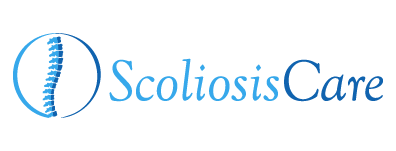Information For Children Living With Scoliosis
Normally, the spine has curves when looking at it from the side; however, it should appear straight when looking at it from the front. The spine of an individual with typical scoliosis may look more like an “S” or a “C” rather than a straight line. St. Joseph’s Children’s Hospital Scoliosis Center can help with scoliosis detection.
Early Onset Scoliosis
Early onset scoliosis, defined as scoliosis that develops before 6 years of age, is one of the most difficult deformities to treat. Often brace wear or casting is not reliable in preventing progression. Additionally, use of the traditional method of surgical treatment is contraindicated as fusion of the majority of spine at this young age would preclude normal chest and lung growth and development.
Spinal Fusion
Although fusions in adults may not fully relieve symptoms and can create additional problems, this is usually not the case in the treatment of pediatric scoliosis. Advances in pediatric scoliosis surgery have led to a more selective, safe and successful surgery.
Types of Procedures
Several procedures have been introduced in which selective fusions of the spine is combined with instrumentation methods to allow for further growth of the maturity of the spine. The most common method of the surgery performed to treat early onset scoliosis requires insertion of a distraction instrumentation system. The system typically consists of selective fusion at one level at the top of the scoliosis curve and the second level at the bottom of deformity with rods placed between subcutaneously avoiding fusion in between. The levels fused are not usually the most deformed and rotated levels that occur at the apex of the scoliosis curve. The system requires distraction every 6 months in attempt to mimic natural growth of the non-fused levels beneath the subcutaneous rods. Unfortunately, this procedure requires multiple visits to the operative room.
A new surgical method has been developed which allows further growth of the majority of the spine and correction of the spine at the same time. In the Shilla procedure, only 2-4 levels of the most deformed segments of the spine, usually at its apex, are fused. This is followed by the placement of long rods on both sides of the spine. At the fusion levels the rods are fixated securely centrally, but attached at the top and bottom of the scoliosis curve to spinal fixation, usually with screws, that do not lock onto the rod. Therefore growth of the spine still occurs, except at the fused apex, guided by the rods like rails of a track. This method of guided growth requires no repetitive distractions, therefore limiting any further surgical procedures.
A recent advancement in implant devices has allowed for an expandable rod that lengthens remotely without the need for repetitive surgery. The “MAGEC” rod is an expendable rod that lengthens by use of a magnetic device placed outside the body. Initial results have been encouraging.
Unfortunately once the young spine has achieved spinal growth and lung development has occurred definitive spinal fusion is likely required.
St. Joseph’s Children’s Hospital Scoliosis Center Offers Treatment For
- Idiopathic Scoliosis: a curvature of the spine that usually occurs in children age 10 to maturity, but can occur in younger children or infants.
- Neuromuscular Scoliosis: also a curvature of the spine, but with a disorder of the neurological system such as cerebral palsy, spina bifida, muscular distrophy or spinal cord injuries.
- Congenital Scoliosis: a curvature of the spine that results from anomalies or abnormally developed vertebrae, which are the building blocks of the spinal column.
How is the Scoliosis Center Different From Other Facilities?
At the Scoliosis Center, patients have access to services geared toward spinal deformity patients – both children and young adults. Our team of dedicated medical professionals strive to achieve life-changing outcomes and are committed to providing personalized quality care.
Our Team Consists Of:
-
-
- Pediatric orthopedic surgeon, David Siambanes, DO
- Neurosurgeon
- Neurologist
- Intra-operative spinal cord technicians
- Pediatric anesthesiologists
- Child Life specialists
- Pediatric ICU specialists
- Pediatric physiatrist
- Physical therapists
- Occupational therapists
-
We Offer:
-
-
- Surgical specialty care for both pediatric and young adults with early onset spinal deformities
- Inpatient and outpatient services focusing on both young adults and children
- An alliance of multi-specialty care
-
